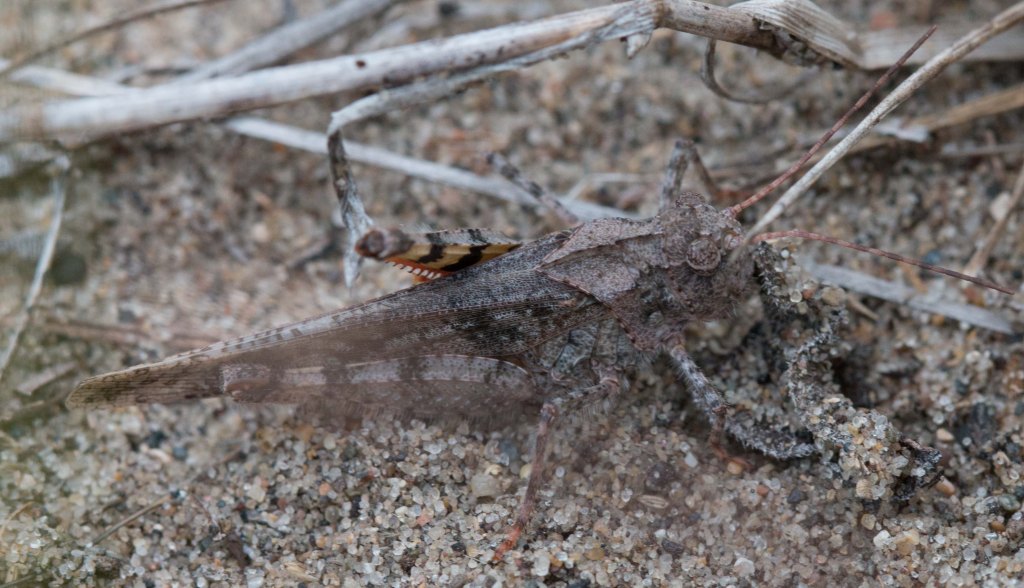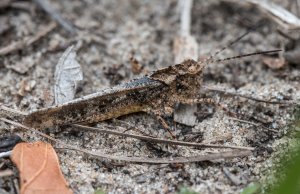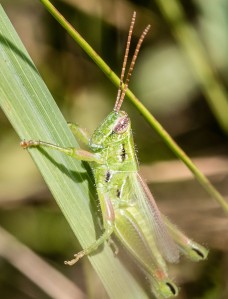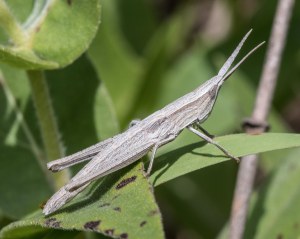by Carl Strang
A very busy field season continues, so I have fallen behind in these posts. Today’s story goes back to the last half of July. I had learned through iNaturalist that one of the singing grasshopper species, historically in my region but which I never had discovered, had been photographed in the south unit of Illinois Beach State Park. I went there on July 21. Soon I began finding them.

White-whiskered grasshoppers (Ageneotettix deorum) are small and beautifully patterned to match their habitat.

They are named for the white antennae. The wings just reach the end of the abdomen, so they are not strong fliers. They mainly jump, sometimes with a bit of wing assist, but then want to sit quietly and count on their camo.

Their habitat reportedly includes bare sand, and that certainly was true were I found them. While I was there I assessed the associated grasshopper community. Another singing grasshopper from different subfamily was the mottled sand grasshopper (Spharagemon collare):

Their brightly colored yellow hind wings stood out when they flew. A smaller relative of theirs, the longhorn band-winged grasshopper (Psinidia fenestralis), also was present in good numbers:

Though these typically have bright red hind wings, at Illinois Beach State Park those wings often are nearly transparent.
Most of the grasshoppers were non-singing species. Among those was Hesperotettix viridis, the meadow purple-striped grasshopper:

A few days later I went down to the Indiana Dunes National Lakeshore, hoping to take advantage of my new knowledge to find white-whiskered grasshoppers there. I couldn’t find any, and in fact all the grasshoppers I saw were strong fliers. Though the habitat looked very similar, one difference was noticeable, the presence of a common predator.

Six-lined racerunners are lizards which like to munch on grasshoppers. Even the good fliers were relatively few compared to Illinois Beach State Park, possibly their nymphs having been culled by the lizards. I have a few more places to check for white-whiskered grasshoppers in future years, but had to move on to other things in 2021.


